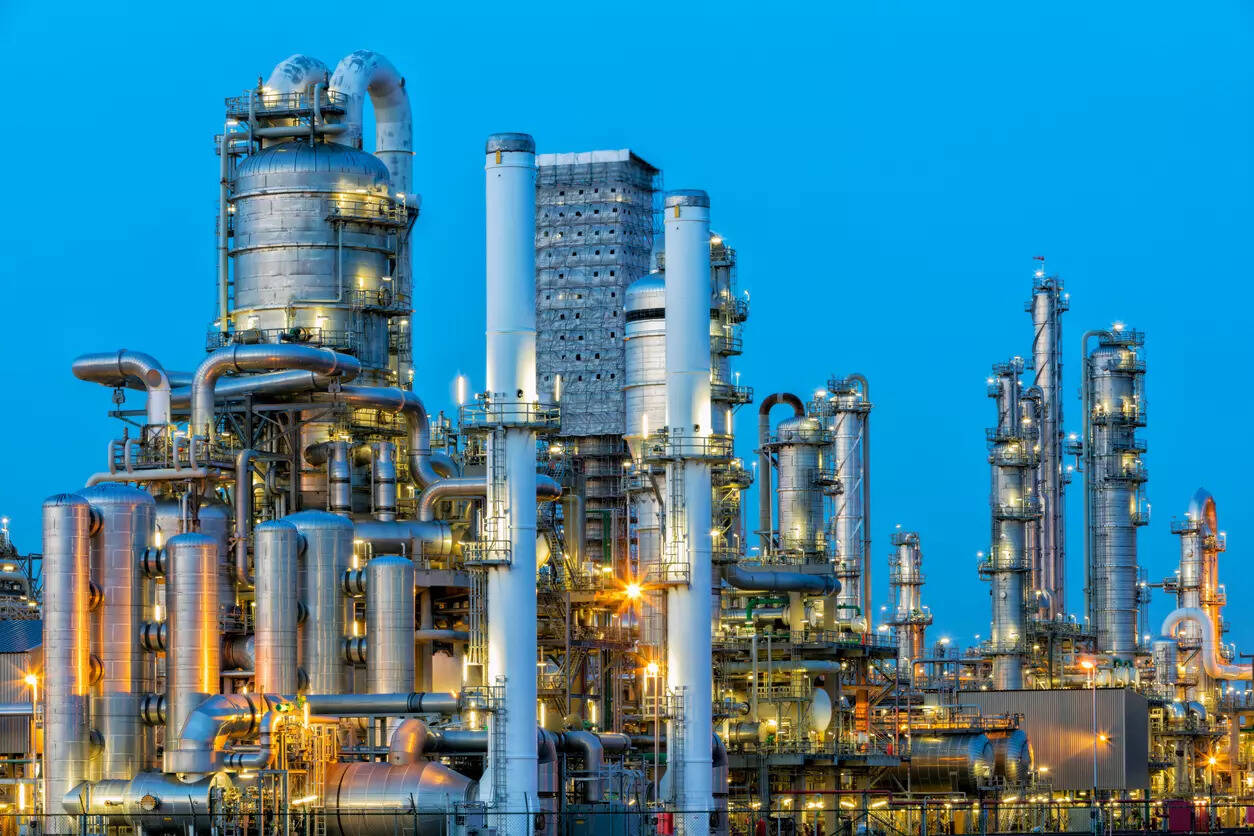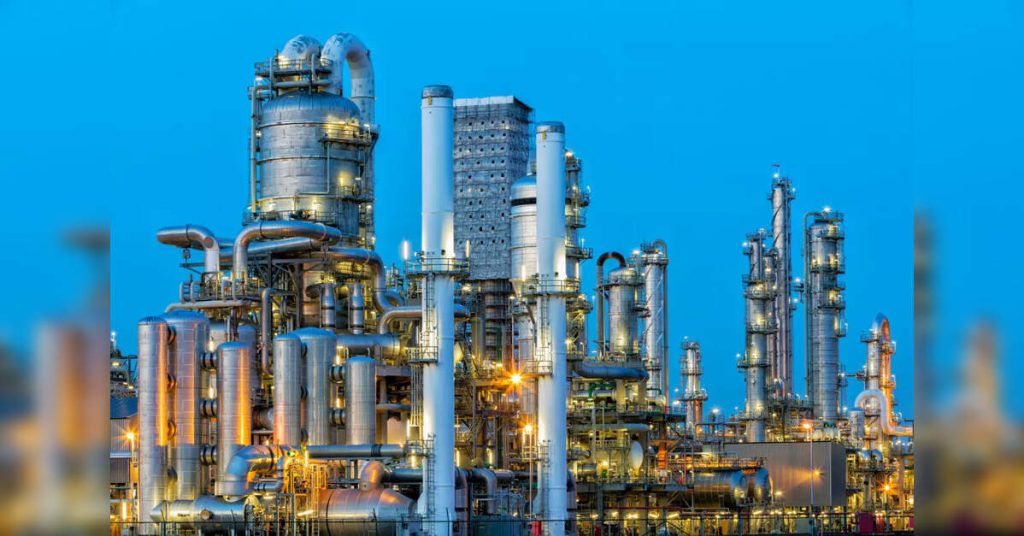
Cabinet Minister of Petroleum and Chemicals Hardeep Singh Puri in one of his addresses in 2024 stated the intention of the government of India targeting a $1 trillion economy of petrochemicals by 2040. Petrochemicals demand is estimated to be about $300 billion in 2025 and expected to rise to about $390 billion in 2030. The next target is to reach $1 trillion by 2040 which is indeed an ambitious target.
The 2025 to 2030 target looks lower because of plans either already under implementation or projections post pandemic. Therefore, the target of 2030 to 2040 looks formidable as it demands a CAGR of 10.8 per cent compared to current about 5.4 per cent. The government of India precisely has set such a high target to address the need to invest in the petrochemicals sector significantly and exponentially.
This is the clarion call as part of Atmanirbhar Bharat.
The specialty chemicals – for this article – are defined as chemicals having value or price exceeding $10,000 per tonne or exceeding ₹1,000 per kg. Correspondingly, the demand of specialty chemicals is typically projected in kilograms per annum (KGPA) or tonnes per annum (TPA) or rarely in kilo tonnes per annum (KTPA) as against commodity petrochemicals whose demand is usually projected in million tonnes per annum (MTPA).
Global Scenario
The global chemicals market is estimated to be about $6 trillion in 2025. Commodity or bulk chemicals make up about 80 per cent of the global chemical industry, with the balance 20 per cent being constituted by specialty chemicals. Specialty chemicals are differentiated from commodity chemicals as follows.The extensive innovation and R&D in product developmentBetter profitability at lesser capex intensitySpecialty chemicals are usually used in low quantities (not bulk) but have a higher value and greatly influence the performance of the end-products as against commodity chemicals which are characterized by use in bulk quantities for general applications.
Indian Scenario
The government of India has set the target of $1 trillion by 2040 for the petrochemicals including specialty chemicals. The present demand of about $300 billion is expected to reach $390 billion by 2030 which appea₹eminently achievable. The target further, however, looks tall order because of a jump in CAGR from 5.4 per cent to about 10 per cent to 11 per cent in the decade of 2030. Considerable greenfield expansion is on the horizon in the refining and petrochemicals sector in states such as Rajasthan (HPCL Rajasthan Refinery), MP (Bharat Petroleum Corporation Limited & Gas Authority of India), Tamil Nadu (BPCL), Odisha (Indian Oil Corporation), AP (BPCL), West Bengal (Haldia Petrochemicals) in addition to many ventures in Maharashtra, Gujarat, and few other states. Thus, there appear to exist several opportunities in these segments where bulk requirement is foreseen besides that exists in the similar plants.
The specialty chemicals demand is currently estimated to be about $64 billion, and needs to grow at a CAGR from current about 4.6 per cent to about 10 per cent to 11 per cent in the next decade to match the ratio of 20 per cent of petrochemicals by 2040. This indeed looks a very ambitious target since many recent studies have projected its growth to about $100 billion by 2033-34. It, therefore, mandates that the specialty chemicals industry will have to grow by quantum leap to keep the pace with the target of $200 billion as 20 per cent of $1 trillion by total petrochemicals.
Globally, the specialty chemicals industry is estimated to be around $1.2 trillion in 2025. The significant market has shifted steadily from North America and EU to Asia in the last two to three decades by corresponding shift in the manufacturing activities. The specialty chemicals industry is estimated to grow faster in emerging markets, such as China and India, on the back of strong growth in end-user industries. One of the most prominent trends in the global chemicals industry has been the emergence of China as a dominant player. This is reflected in an increase in China’s share in the global chemicals industry from about 6 per cent in 2000 to about 45 per cent in 2025. China continues to be a clear leader across a wide range of chemicals, with a significantly higher production capacity than its pee₹including India which boasts of about 10 per cent share.
Segment-wise analysis of the specialty chemicals market indicates that Agrochemicals and Dyes & Pigments segments dominate the Indian market which account for almost 50 per cent of the specialty chemicals market in which India ranks among the global leaders. As a corollary, it also implies that very high potential exists in other segments which are waiting to be exploited. The other key segments in which India has a strong presence are Flavou₹& Fragrances, Surfactants, Textiles, Food Additives, Construction, Polymer Additives, and others.
The supply chain of specialty chemicals largely originates from commodity petrochemicals. The examples are plenty namely Ethylene, Propylene, C4s, C5s, C6s (e.g. Benzene), C7s (e.g. Toluene), C8s (e.g. Xylenes), C9s, C10s, Phenol, Styrene, Acetic Acid, Polyols, Acrylates, lower and higher alcohols etc. to name a few.
Surprisingly, India is still supposed to be surplus in chemicals like Benzene, Butadiene etc, which are exported because of lack of demand in the Indian market. The demand potential of chemicals like Propylene Glycol, Polyols etc. is still untapped. Most of the Indian commodity petrochemicals plants are importing majority of the specialty chemicals like Polymer Additives, Catalysts, Peroxides, host of other Chemicals etc. Many of these are in fact imported from China who have progressively captured these markets over the last 20 years.
Thus, many segments show immense potential for capturing potential markets.
Present challenges & path forward
1. Raw Materials – High cost whether local or imported, Local unavailability, High import dependency, High product cost
Path Forward
Saturate the consumption of surplus chemicals, which are otherwise exported, either by developing new molecules or enhancing the existing capacityProcess integration with produce₹of commodity chemicals in the vicinity for long term supply agreement of precursor chemicalsDevelop the configuration of large petrochemicals complexes to produce many precursor chemicals useful for specialty chemicals
2. Global Acceptance
Institute the agency like REACH (Registration, Evaluation, Authorization and Restriction of Chemicals)This has been the requirement for some time and needs to be expedited with the support of government of India MinistryIt will help ensure the compliance of quality management systems within the company and it will instil the kind of discipline in the entire business process and thereby allow easy passage to markets in EU and similar countries
3. Regulatory Compliances
Regulatory compliances like meeting stringent norms for safety, health and environmental appear as hurdles but essential to become globally acceptable in hazard prone chemicals industry
4. Industry & academia / research institutions collaboration
This is working, however, in a limited way in states like Maharashtra and Gujarat which has concentration of MSME and large chemical industries and the well-known institutions for over 50 yearsMost other states do not enjoy such support. States like MP, AP, Rajasthan, Odisha etc. where many large industries have been planned in near future need to facilitate such collaborationThis will also give the boost to the quality education and research capabilities of the institutions
5. Chemical parks like infrastructure
Chemicals Parks like those functional in countries like Germany, Singapore, China are one strong solution to facilitate smooth functioning of MSME chemical industries where common infrastructure for utilities, electricity, effluent treatment, incineration, logistics etc. is provided to allow the individual companies to focus on core manufacturing of the productsSuch chemical parks are a necessity in a large country like India which will boost the growth of industry uniformly and create the eco system needed for specialty chemicalsChemical Parks will also become the nodal point for coordination of items like raw material sourcing, uniform information about products and future requirements, manpower sourcing etc.
6. Process automation & digitalizationThe specialty chemicals are almost exclusively produced by batch reactions and batch processesAdopting measures like Process Automation, Digitalisation at all levels from process to products, Simulation and Modelling will help improving operational and performance efficiencies while assuring consistency in product quality which is the hall-mark of any specialty chemical
7. Shortage of skilled workforce or talent – Skill gapThis is one of the oft cited reasons on many platforms which is very paradoxicalIndia boasts of the largest population of young educated people and yet the bulk of them are claimed to be either unemployable or those good are simply not much interested in jobs in chemical manufacturing industryThe industry will need to intensify reaching tier-II and tier-III institutions for recruitment of chemical enginee₹and polytechnic diploma holde₹or reach even colleges for BSc and MSc studentsLet these institutions work on small but meaningful projects and assignments involving the students who can join the respective or similar industriesChemical Parks built with residential estates in the vicinity would also boost the employmentChemical Parks can also become the hub of facilitating the supply of skilled manpower
8. InvestmentSubstantial new investment is critical to this journey enabled mostly through GOI schemes for developing new molecules or building on exiting strengthThere will be efforts to fill the vacuum by merge₹and acquisitions by foreign investo₹and multinational companiesThis appea₹attractive because of inflow of FDI though not a preferred mode in the new Atmanirbhar Bharat
It is possible to combine all the above and more through sustained efforts for a quantum leap to $200 billion by 2040 to usher in a new era of Specialty Chemicals in India.
The author is Jayant D Divey, Petrochemicals Technology Consultant (Senior Vice President – Retired from Reliance Industries Limited). All the views are personal.


